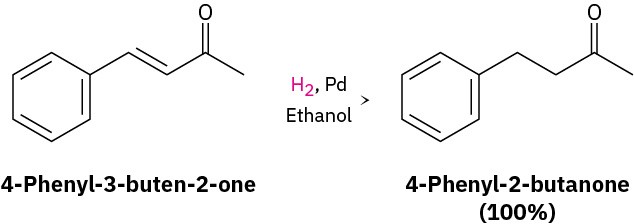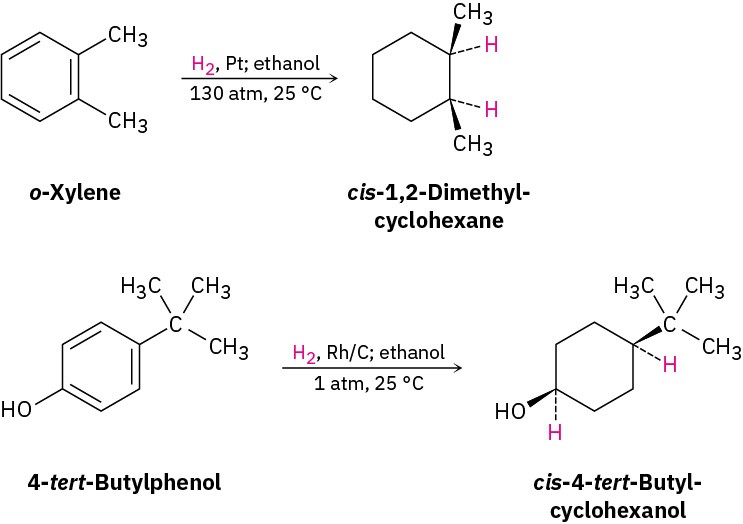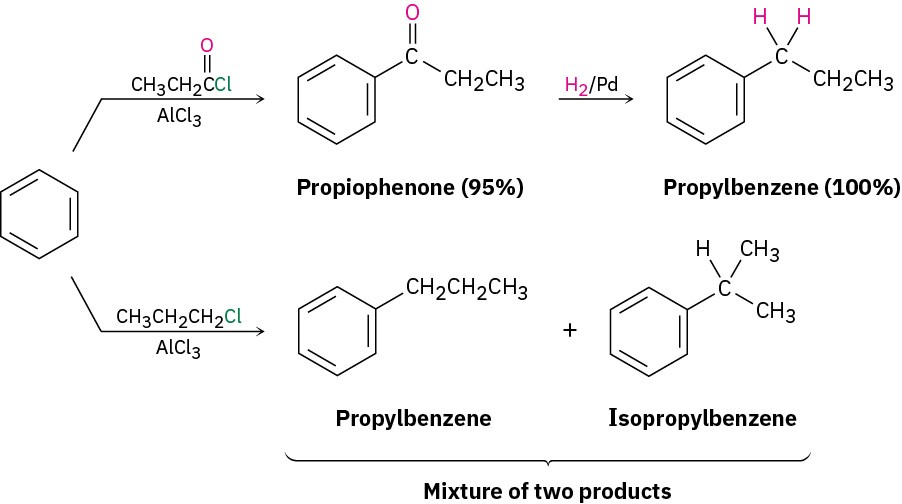16.9 Reduction of Aromatic Compounds
Catalytic Hydrogenation of Aromatic Rings
Just as aromatic rings are generally inert to oxidation, they’re also inert to catalytic hydrogenation under conditions that reduce typical alkene double bonds. As a result, it’s possible to reduce an alkene double bond selectively in the presence of an aromatic ring. For example, 4-phenyl-3-buten-2-one is reduced to 4-phenyl-2-butanone using a palladium catalyst at room temperature and atmospheric pressure. Neither the benzene ring nor the ketone carbonyl group is affected.

To hydrogenate an aromatic ring, it’s necessary either to use a platinum catalyst with hydrogen gas at a pressure of several hundred atmospheres or to use a more effective catalyst such as rhodium on carbon. Under these conditions, aromatic rings are converted into cyclohexanes. For example, o-xylene yields 1,2-dimethylcyclohexane, and 4-tert– butylphenol gives 4-tert-butylcyclohexanol.

Reduction of Aryl Alkyl Ketones
In the same way that an aromatic ring activates a neighboring (benzylic) C–H toward oxidation, it also activates a benzylic carbonyl group toward reduction. Thus, an aryl alkyl ketone prepared by Friedel–Crafts acylation of an aromatic ring can be converted into an alkylbenzene by catalytic hydrogenation over a palladium catalyst. Propiophenone, for instance, is reduced to propylbenzene by catalytic hydrogenation. Because the net effect of
Friedel–Crafts acylation followed by reduction is the preparation of a primary alkylbenzene, this two-step sequence of reactions makes it possible to circumvent the carbocation rearrangement problems associated with direct Friedel–Crafts alkylation using a primary alkyl halide (Section 16.3).

The conversion of a carbonyl group into a methylene group (C=O → CH!) by catalytic hydrogenation is limited to aryl alkyl ketones; dialkyl ketones are not reduced under these conditions. Furthermore, the catalytic reduction of aryl alkyl ketones is not compatible with the presence of a nitro substituent on the aromatic ring because a nitro group is reduced to an amino group under reaction conditions. We’ll see a more general method for reducing ketone carbonyl groups to yield alkanes in Section 19.9.

Problem 16-21
How would you prepare diphenylmethane, (Ph)2CH2, from benzene and an acid chloride?

